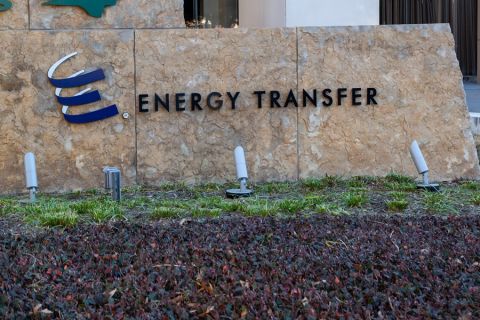Oil and gas supermajor Chevron Corp. is teaming up with Restore the Earth Foundation Inc. for a reforestation project for up to 8,800 acres of property in St. Charles Parish, Louisiana.
The partnership—Chevron’s first carbon offset project—aims to develop a nature-based solution expected to remove carbon from the atmosphere and focus on restoring natural cypress forests and swamps, according to a joint release from the two companies on March 28.
“Carbon offsets are expected to play a notable role in global carbon reduction,” Barbara Harrison, vice president of offsets and emerging, Chevron New Energies, commented in the company release.
The St. Charles Parish cypress reforestation project is expected to generate carbon offsets that could help offset Chevron’s carbon emissions and help customers achieve their lower carbon goals.
“Chevron New Energies is proud to collaborate with Restore the Earth on our inaugural carbon offsets project—bringing lower carbon solutions to Chevron as well as our customers,” Harrison added.
Chevron will provide funding for Restore the Earth to plant an expected 1.7 million native bald cypress seedlings as part of the project. Based in New York, Restore the Earth is a 501(c)(3) not-for-profit with a mission of restoring the Earth’s essential forest and wetland ecosystems.
“We are excited to launch this partnership with Chevron New Energies,” P.J. Marshall, founder and executive director of Restore the Earth Foundation Inc., said in the joint release. “Restore the Earth’s landscape-scale reforestation is a nature-based solution critical to addressing climate change and provides so many additional environmental and social benefits to the region and to the nation.”
In 2021, Chevron launched Chevron New Energies to accelerate lower carbon businesses in hydrogen; carbon capture, utilization and storage; offsets; and emerging opportunities, as well as support Chevron’s continued focus on biofuels.
“Partnering with Restore the Earth Foundation and Chevron to accelerate reforestation on Louisiana Wildlife and Fisheries lands helps us to reach the full potential of enhanced, sustained, protected and conserved habitat of wildlife species supporting vegetation and biodiversity on our wildlife management areas,” added Jack Montoucet, Secretary of the Louisiana Department of Wildlife and Fisheries (LDWF).
“Additional benefits of the restored Louisiana forested wetlands include the carbon sequestration of the trees supporting climate mitigation and LDWF adaptation goals,” Montoucet also noted.
Recommended Reading
For Sale? Trans Mountain Pipeline Tentatively on the Market
2024-04-22 - Politics and tariffs may delay ownership transfer of the Trans Mountain Pipeline, which the Canadian government spent CA$34 billion to build.
Energy Transfer Announces Cash Distribution on Series I Units
2024-04-22 - Energy Transfer’s distribution will be payable May 15 to Series I unitholders of record by May 1.
Balticconnector Gas Pipeline Back in Operation After Damage
2024-04-22 - The Balticconnector subsea gas link between Estonia and Finland was severely damaged in October, hurting energy security and raising alarm bells in the wider region.
Wayangankar: Golden Era for US Natural Gas Storage – Version 2.0
2024-04-19 - While the current resurgence in gas storage is reminiscent of the 2000s —an era that saw ~400 Bcf of storage capacity additions — the market drivers providing the tailwinds today are drastically different from that cycle.
Ozark Gas Transmission’s Pipeline Supply Access Project in Service
2024-04-18 - Black Bear Transmission’s subsidiary Ozark Gas Transmission placed its supply access project in service on April 8, providing increased gas supply reliability for Ozark shippers.




